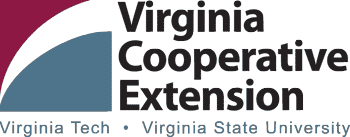Food Safety Plan Writing FAQs
Click the question to go to the answer on this page.
- If I don’t get GAP certified, do I need to still have a written food safety plan?
- What are the benefits to having a written plan?
- How in depth does a written plan need to be?
If I don’t get GAP certified, do I need to still have a written food safety plan?
While a written food safety plan is not mandatory for growers not getting GAP certified, if you anticipate you will be scaling up and transitioning towards markets that require GAP certification, developing a food safety plan is critical. In fact, many markets that do not require formal food safety plans still often want verification showing your understanding of on-farm food safety risks and practices. In many markets we surveyed (see Accessing Virginia’s Markets), many buyers felt a simple written plan with documentation was highly desirable.
What are the benefits to having a written plan?
In the dozens and dozens of producers we have assisted with their on-farm food safety assessments and practices, all have reiterated that the process of creating a written food safety plan has many benefits. Besides the obvious benefit of fine-tuning a farm’s food safety operations, developing a plan can help a farm greatly increase their efficiencies and streamline production, harvest, and post-harvest efforts. For example, having a consistent policy on how produce is picked, washed, packaged, and stored can increase product quality and uniformity. Having a written plan also demonstrates to your buyers a certain level of organization and commitment to quality and food safety. In the event that a problem may arise, having a food safety plan can provide the necessary documentation required to verify your handling of the products, as well as help to identify where problem areas may have contributed to any issues.
How in depth does a written plan need to be?
While this greatly depends on the market and also whether or not the plan is being prepared as part of a food safety audit, at minimum, it is wise to explore different examples so you can develop a plan that is well tailored to your farm. In any case, it is important to focus on the key risk areas mentioned on this website, such as worker health and hygiene, soil amendments, water quality (production and post-harvest), animals, facilities, equipment, and products being grown, and to describe GAPs you will implement. The resources found under the ‘Producer Resources’ section are a great starting point for simple food safety plans, or full-fledged plans needed for certification purposes. More in-depth VCE Plan of Action manual templates and resources are provided under the GAP Certification Resources subpage.
